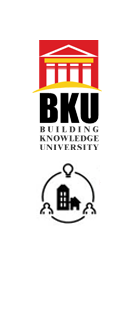Siding
This lesson covers four categories of siding assemblies: wood, fiber cement, metal, and vinyl. Physical properties for each of the four categories vary widely from product to product; they all offer unique features and benefits.
All siding products serve as the primary drainage plane for an envelope, providing some fire and acoustic resistance as well as aesthetic value. Because of the way in which building contractors install siding, assemblies must be designed so that any water which does get behind the exterior finish can drain from the envelope.
Learning Objectives
At the conclusion of this lesson, you will be able to:
- Be familiar with typical applications of wood, metal, fiber cement, and vinyl siding products
- Know where designers use siding, and be familiar with the relative costs of these assemblies
- Be capable of describing the seven typical components of a siding system
- Be able to name the three types of structural framing materials used most often with siding systems
- Know how the four types of siding systems differentiate themselves by the manner in which they are fastened to the structure
- Understand how siding assemblies address design criteria such as structural loading requirements
- Be familiar with the common problems associated with glazing systems
Hover your cursor over icons to see title of link
To access this course you need to sign in.

